 HOME HOME
The Coupe Quattro
My CQ
Ongoing Restoration
Gallery
Info / Data
Suppliers
Links
T85q.com
|
Untypical Type 85: An Audi 90 with attitude
By Brendan Lopez (originally published in the US magazine “European Car”)
At times I can be a difficult person so please, particularly when it comes to modified cars. When ace lensman Les Bidrawn said that he had inserted an Audi Coupe GT into the lineup for our Keeper Coupes feature, I was noticeably upset for both the unilateral decision and choice of car. Many, myself included have always considered two-wheel-drive Audi cars inferior to all wheel-drive variants, particularly when faced with inclement weather. After all, Quattro technology single-handedly elevated Audi from relative obscurity to compete in the major leagues among European manufacturers.
Later I would be converted by the example Les lined up.
Maximilian McDonald, the owner of Audi Volkswagen Specialists (Adna, Wash.: 360/748-8578) built this particular car for his mother to be used as a daily driver and a One Lap participant. Decked out in original Alpine White paint, the body was stock save for a few changes, most noticeably the painted rear spoiler, NACA brake ducts and a front grill blend. Prominently hung from the front bumper was a set of PIAA projector front fog lights; less noticeable are the blackened taillights and European spec H4 headlight assemblies. Were it not for its competition aspirations, I would probably vehemently object to the additional lights and NACA ducts, which serve to clutter the Coupe GT’s otherwise clean looks.
Underhood motivation is the best thing about this particular conversion. From the factory, the Audi Coupe GT came with three different engine types: WE 100-hp, KX 110-hp, and NG-130 hp all are decent long-lasting engines, but marginally appropriate for a car named Coupe GT. As a footnote, the NG, type engine types were used in late'87 models and if the fifth letter of your VIN is “C,” you should have the higher-output engine. Instead of modifying the stock engine, Maximilian chose to install a 164-hp type 7A engine as used in later Audi cars. At the time of its introduction, the type 7A engine was proudly advertised as Audi's most powerful normally aspirated engine ever offered in the U.S. Fitting the 2.3-liter twin-cam engine to the earlier Coupe chassis required a bit of fabrication, mostly brackets and such. One interesting modification was making the special brackets to move the AC compressor to the cool side of the engine. The power steering and alternator also required special brackets. Another relocated item is the battery, which is now housed in a trunk-mounted battery box and features an inertia switch that disconnects the battery in the event of a major accident.
Engine cooling is accomplished by means of twin stacked radiators, which work rather well considering I drove the car hard in 100-plus degree weather with the A/C system on. Max informed me that he and his mother drove from Washington to Southern California all the way with the A/C blasting and nary a hiccup. Fuel consumption on this maiden voyage was purported to be 30-plus mpg.
Right now, the engine was left stock with the exception of a modified low-restriction ceramic plated airbox with a K&N filter element and an AVS designed exhaust system. The stock Motul-filled transmission receives power via an AVS lightened flywheel with a heavy-duty clutch. In the past I’ve never been a fan of heavy-duty clutches and my opinion hasn't changed with this one. Another source of disconcertion is the short aluminum MOMO shift knob that makes shifting tricky at first.
Driving the Coupe proved to be quite enjoyable. I was unexpectedly pleased with how well sorted and balanced the car was. Much of that owing to the suspension system upgraded with Boge Turbo Gas struts and shocks used in conjunction with Eibach springs. Max didn’t tell me what the oversize front and rear anti-roll bars were, but they served to balance the chassis from a normal push and reduce body lean. Driving hard into corners, the driver can call upon AVS’s front brake system consisting of four-piston aluminum/stainless-steel calipers, DOT certified braided stainless steel lines, and larger cross-drilled rotors. The rear brakes are stock, but a factory rear disc setup is planned. Driving out of the corner, the 215/40-16 BFGoodrich Euro TAs mounted to 7-in. wide Borbet wheels maintain their purchase on the pavement.
Strapped via a four-point harness in the Coupe GT's Recaro LS seats; each successive lap time on the test track becomes shorter until the track meister waves us in for the final lap. With reluctance I loosen my grip on the suede covered MOMO wheel unfastened the harness and stepped free of the Coupe GT with
a newfound respect for Audi's red-haired stepchild.
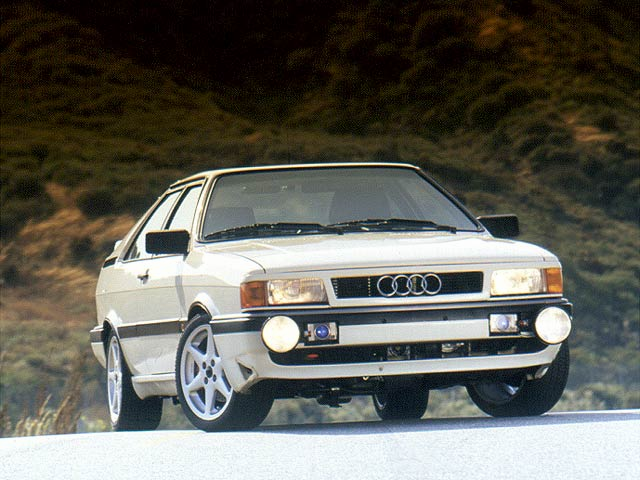
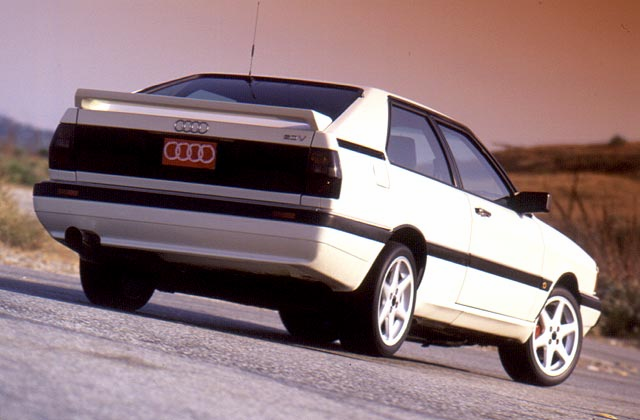
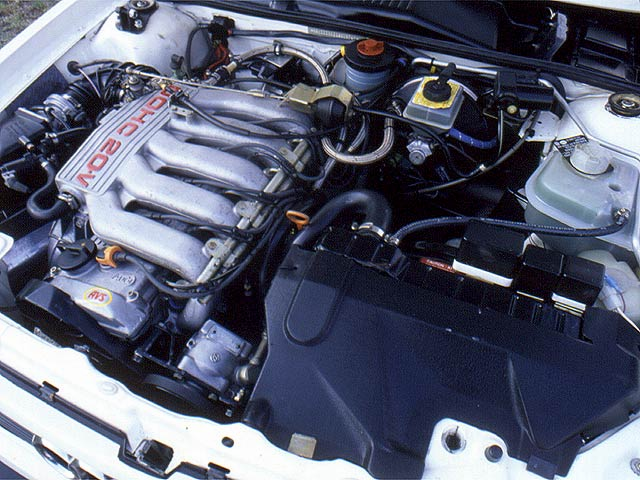
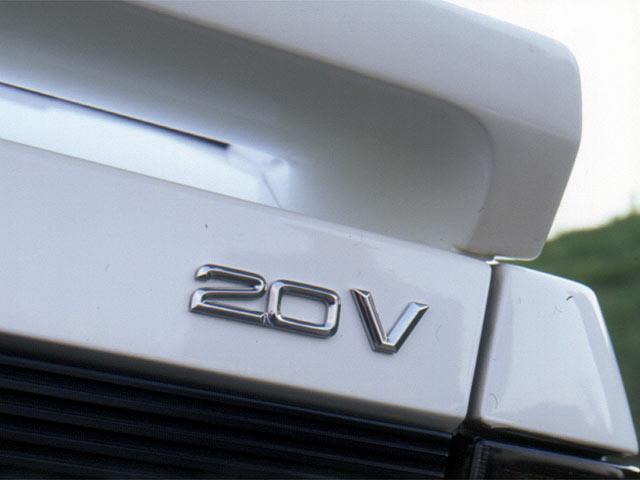
|
Click Here to email me
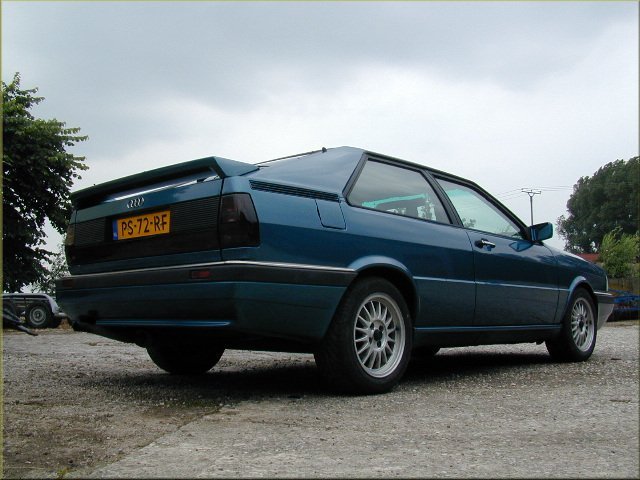
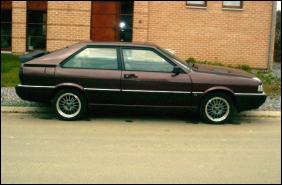
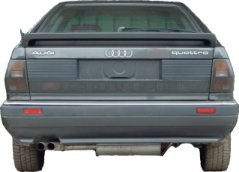
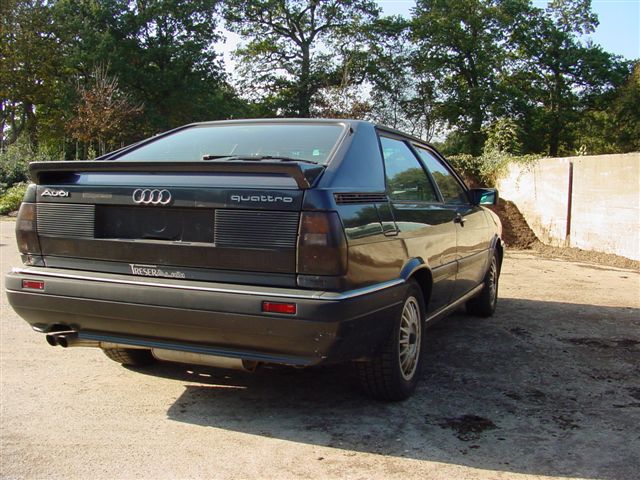
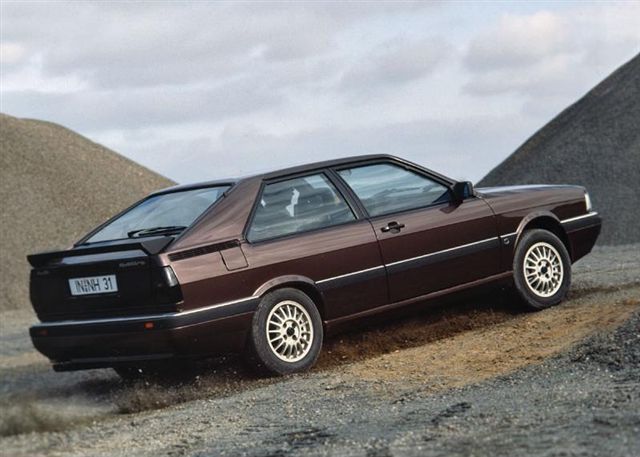
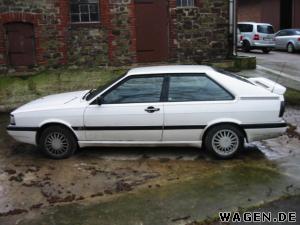
|





